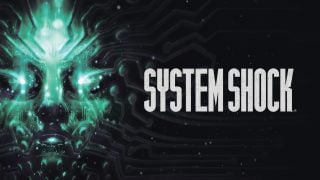It’s easy to forget now, decades after the transition, but the jump from 2D to 3D had profound and franchise-changing effects on many of the medium’s most prominent franchises. Some, like Mario and Zelda, masterfully translated their core conventions into a new format; some, like Sonic, struggled to find a foothold in a new dimension; and others, like Kirby, never really transitioned at all, remaining on two planes while simply bumping up the graphics.
Metroid was one of the last Nintendo franchises present in the 2D era to make the jump, having skipped over the occasionally awkward era of N64 “adolescence” and straight into the sharper time of GameCube “young adulthood.” But when Samus Aran finally returned after nearly a decade-long absence, it was no mere 3D experiment — it was a digital masterpiece.
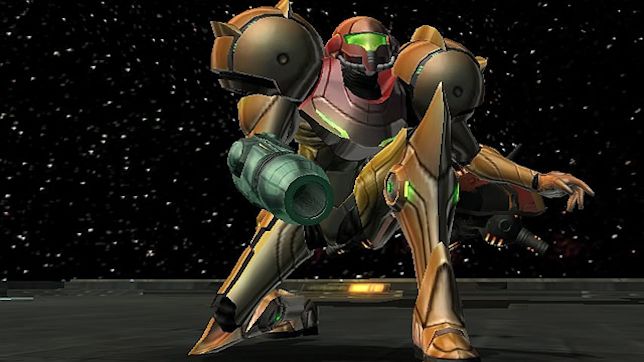
Metroid Prime, released 15 years ago today, was not only the first Metroid game I experienced, but one of the finest action-adventure games I’ve ever played, a flawless conversion of the Metroidvania formula to 3D space, and arguably the greatest GameCube game out there. I replayed the title over the summer due to my excitement over the announcement of Prime 4, and it allowed me to appreciate the game’s subtleties and design decisions in a nuanced way that I couldn’t when I was younger.
The Hunter’s return
Metroid Prime was arguably one of the most anticipated games ever released in the West, and rightfully so — everything surrounding the game seemed as if it could spell disaster, being handed off to the then-rookie Retro Studios and employing a first-person view similar to the burgeoning FPS genre of the time. In retrospect, it seems inevitable that the game would end up as some sort of Halo clone, aping games whose aesthetic Metroid in part inspired. But the final result was far greater than that.
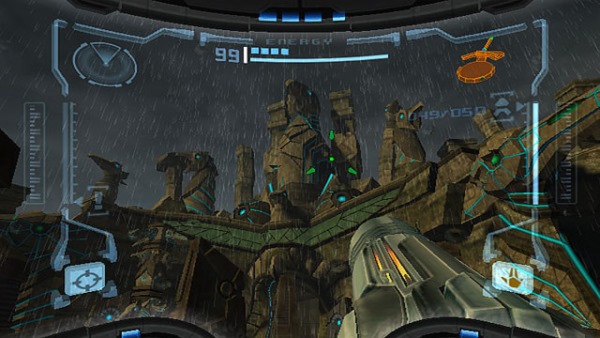
Prime isn’t really a first-person shooter so much as a first-person adventure. You do shoot things, yes, but the focus is less on combat and blasting alien bugs and more on exploration, discovery and item acquisition. The player isn’t concerned with saving ammo or killing every last Geemer — instead, experimentation and close observation of the surroundings was paramount, asking the audience to pay attention to their surroundings, just like Super Metroid of old.
Of course, the way in which 2D Metroid’s destructible blocks worked wouldn’t fly in a 3D environment, which posed the issue of how players would be able to discern what weapons or abilities would work in certain areas. But the game had an answer to that: the scan visor, which not only allowed you to analyze enemies and systems within the world but also what objects could be destroyed, what objects of interest the environment held and more. It seems a simple and rudimentary feature in hindsight, but it was crucial to reinventing the Metroid experience in 3D — to the point that many (including myself) played the majority of the game with the visor on, only turning it off to open doors and fight enemies.
Subtle storytelling
Another thing that Retro understood perfectly was that Metroid didn’t need a cinematic or wordy narrative. Prime is a game built upon discovery, and so too is the game’s plot not handfed to the player, but rather slowly revealed through lore entries and extrapolation.
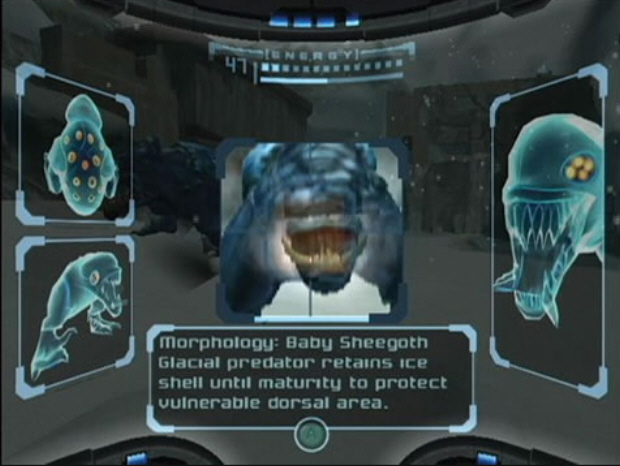
When you begin on Tallon IV, you discover bits of Chozo Lore describing a “great poison” — which seems to be in reference to the toxic water flowing through the Chozo Ruins. But as the game progresses and you see further reference to the concept beyond the game’s beginning, you slowly come to realize that it represents something deeper and insidious — something lurking deep within the heart of the Impact Crater. Without exposition, narration or any sort of wordiness, the game still builds tension towards an unseen and alien threat. It’s unique, original, and wholly suited to Metroid. It’s a slight shame that Prime 2 and 3 went for more conventional storytelling, because it would’ve been interesting to see them attempt something equally ambitious.
The other bits of lore were also instrumental, not just in mere world-building, but in establishing something that we always knew: Samus is hardcore. Space Pirate Logs speak of her in fearful whispers, dreading the day that “The Hunter” will come and ruin their operations. The Chozo speak of her as a prophesied savior who will save the planet. And while Samus doesn’t say anything throughout the game, the occasional subtle moment — such as when she looks upon the burning temple grounds at the end with what appears to be some regret — proves more meaningful than any monologue.
Prime performer
All of this was great, but it wouldn’t have meant anything if the gameplay was subpar. Fortunately, Prime played like a dream, responsive and intuitive in equal accord. Taking lock-on mechanics from Zelda to simplify aiming and removing clumsy twin-stick controls, simply making your way around in the overworld is smooth and gratifying. The morph ball feels like a natural fit for 3D, and while Echoes would prove a more interesting use of its potential, it’s still lots of fun to use the Boost Ball to zoom around.
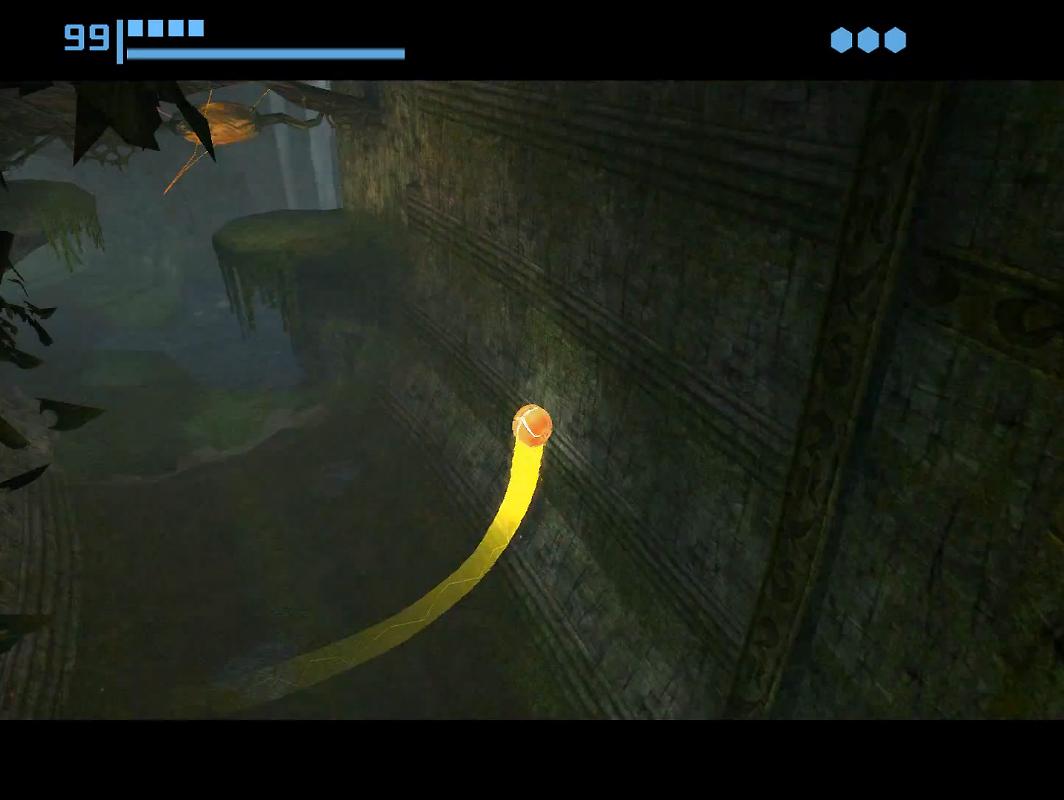
One of the more intriguing design choices in Prime was to split Samus’ beam into different weapons rather than one continuously upgraded armament. Each of the four beams has advantages and disadvantages — the Power Beam is quick and weak, the Wave Beam homes, the Ice Beam freezes, and the Plasma Beam… is pretty much superior to the others, but you get it late in the game. There’s a balance in play between the four, and certain beams are more effective against certain enemies. While simplified for the sequels, this system strikes a good chord, and I wish they hadn’t moved to the ammo system for Prime 2 or straight upgrades in Prime 3.
The game’s environments were also stellar. While they might’ve been a bit less “alien” than some other Metroid settings, being variations on a rainforest, a snow land, etc., they still manage to feel lush and alive. The variety of wildlife not only establish notable threats to Samus, but a fascinating glimpse into very rudimentary ecology (courtesy of the scan visor). This was bolstered by excellent level design, with plenty of interconnectivity and quick ways to get from one place to another.
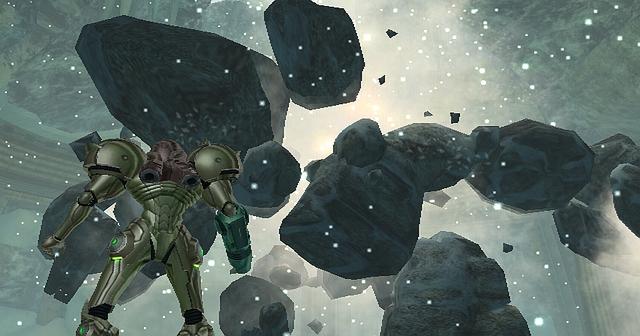
There’s a reason people remember Prime fondly: it still holds up a decade and a half later. The graphics have aged surprisingly well for an early GameCube game, the atmosphere is lonely yet tranquil, and its ideas and executions are exactly what it needed to be — a Metroid game for a new era. While its sequels branched out in different directions, the original remains one of the greatest examples of the 2D to 3D transition in all of games, and even outside of that lens it’s an absolutely fantastic game, and one we’ll be talking about another 15 years from now. If Prime 4 can capture even half the magic of this one, it’ll be a game to remember.
If you haven’t experienced the original Metroid Prime, I cannot recommend it highly enough (especially on the Wii Trilogy re-release, where it controls masterfully). There’s no better time to step onto Tallon IV.
Leave a Comment
